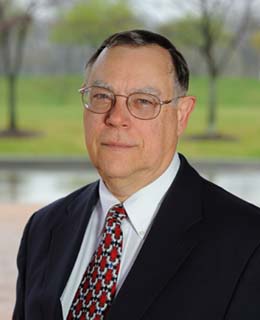 |
 |
| current issue |  |
past issues |  |
send a letter/news |  |
address update |  |
advertise |  |
about us |  |
alumni home |
Web Extras
|
Dream Machines
James Eberhardt '69G helps build clean diesel engines By David Hubler '65G |
Easy to print version |
 James Eberhardt '69G. Photo by Gil Talbot |
James Eberhardt '69G has had at least seven different jobs and been involved in four agency-wide reorganizations since he joined the U.S. Department of Energy in August 1975. But he is most proud of the work he's doing now as chief scientist in the Office of Vehicle Technologies. He's a key advocate for moving the nation away from gasoline-guzzling vehicles and toward the adoption of more fuel-efficient diesel-powered automobiles and light vehicles.
"If there's one accomplishment which I am most proud of, it is that," he says. "Diesel engines get about 25 percent to 40 percent more miles per gallon than a comparable horse-power gasoline engine."
Although the auto industry introduced lead-free gasoline and the catalytic converter in the 1970s to reduce the pollutants emitted by gasoline engines, no equivalent converter for diesel engines was produced at the time, mainly because very few passenger vehicles were diesel powered. Diesel engines were largely used in big vehicles such as 18-wheelers and farm tractors.
The infamous gasoline shortages of the mid-'70s prompted the government to encourage Detroit to manufacture more fuel-efficient autos, including more widespread use of the diesel engine. That need has neither abated nor been sated, but we are moving closer to diesel power, Eberhardt says.
Eberhardt headed the Office of Transportation Materials during President George H.W. Bush's administration. His office experimented with lightweight materials, such as carbon fiber composites, hoping to find an alternative to steel so manufacturers could produce higher fuel-efficiency vehicles by reducing their weight.
"We're still working on them because the price [of producing the materials] is still not low enough" to be commercially viable, he says.
When Bill Clinton succeeded Bush, his new energy secretary, Hazel O'Leary, abolished the Materials Office and Eberhardt was named director of the Office of Heavy Vehicle Technologies, an assignment that brought him in contact with the diesel engine manufacturers and the major truck producers.
Asked why the more energy-efficient diesel engine wasn't adopted much earlier, Eberhardt replies simply, "The soot and the smoke, the smell, the noise."
The problem was that diesels were putting out large amounts of soot, "particulate matter, as we call it, and nitrogen oxide," he says. "We decided to tackle that problem head on."
Working with diesel engine and catalytic converter manufacturers, Eberhardt's office helped create a diesel filter. "If you put that on the tail end of a diesel, you can remove the soot particles. However, we found out that we [also] had to get the sulfur out of the fuel for that to work properly," he explains.
They convinced the Environmental Protection Agency that refineries could reduce the sulfur content in diesel fuel to 15 parts per million from the pre-1998 levels of 300 parts per million.
"We were expecting the diesel fuel manufacturers to go absolutely bonkers," he says, because of the expense involved.
Page: 1 2 Next >Easy to print version
blog comments powered by Disqus

